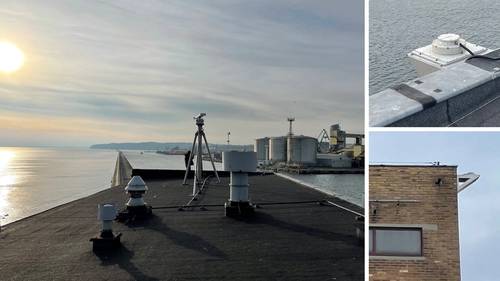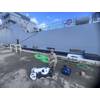Miros Sensors put to the test in the Port of Gdynia
Miros has installed a tailored environmental monitoring system to support a three-year research project at the port of Gdynia in Poland.
The custom system is designed to provide accurate current and wave measurements and oil spill monitoring from a strategic location in the bay of Gdansk. The expected results will be used to create recommendations for the operation of unmanned units in ports and will be made available to governmental organisations.
The gathered sea state data will be combined with a hydrodynamic model to calculate and forecast hydro-meteorological conditions in the Gdynia harbour area. A major project milestone was achieved in February 2022 when data first became available via Miros Cloud.
The research project is investigating the benefits of using mobile unmanned platforms to perform observations and surveillance work in ports. This is the result of an international consortium consisting of five entities: Port of Gdynia Authority S.A., Gdansk University of Technology, Gdynia Maritime University, Norwegian Institute of Water Research, and Miros AS.
The system is a combination of a Miros Wavex radar with oil spill detection capability and WaveWeather, the company’s high-performance, remote, dry sensors for the measurement of directional waves, meteorological parameters, water level and surface currents.
The research project’s findings will determine the degree of reliability of bathymetric surveys and automatic water sampling conducted by unmanned vehicles. Based on the data obtained during the project, 3D models will be created to predict the movement of specific substances such as oil spills. This will be supplemented by tests in the harbour, which will provide several practical insights and enable the faster improvement of previously implemented solutions.
“This pan-European project is a testament to our expertise in advanced environmental monitoring," said Emilie Dorgeville, VP Business Development, Ports and Renewables at Miros. "The measured data is made available in real-time through Miros Cloud for the navigational authorities and all partners involved in the project. The collected wave and current information will be combined with a three-dimensional hydrodynamic model run by the Norwegian Institute for Water Research to calculate and forecast hydro-meteorological conditions in the Gdynia harbour area. The data resulting from Miros’ sensors will be used to support with oil spill detection and recovery operations at the port. We are proud to support this innovative project looking at changing and simplifying the routines in port surveillance and operations.”














 December 2025
December 2025



